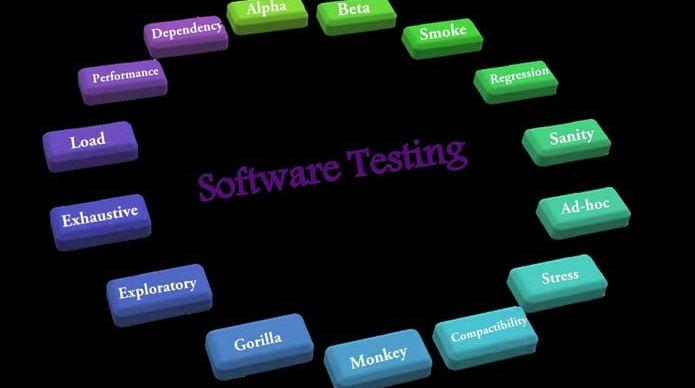Software testing plays a crucial role in ensuring the quality and reliability of software applications. By subjecting software to rigorous testing procedures, developers can identify and rectify defects, bugs, and inconsistencies before releasing the software to users. This process of testing involves a variety of approaches, each tailored to specific aspects of the software’s functionality.

Understanding the Different Types of Software Testing
Application testing encompasses a wide range of methodologies and techniques, each serving a specific purpose in the software development lifecycle. Here’s a comprehensive breakdown of the different types of software testing:
Unit Testing
Unit testing focuses on individual units of code, such as functions, modules, or classes. It isolates these units and tests them in isolation to ensure they perform as expected and adhere to the specified requirements. Unit testing is typically conducted by developers during the early stages of development, providing immediate feedback on the correctness and efficiency of the code.
Integration Testing
System Testing
System testing assesses the overall functionality of the software application as a whole. It considers the interactions between the software and its external environment, including hardware, operating systems, and other applications.
Acceptance Testing
Performance Testing
Performance testing evaluates the software’s ability to handle expected workloads and meet performance expectations under various conditions. It measures metrics such as response time, throughput, and resource utilization to ensure that the software can handle the demands of real-world usage. Performance testing is often conducted in a simulated or real-world environment to identify performance bottlenecks or areas for optimization.
Security Testing
Security testing focuses on identifying and eliminating vulnerabilities that could compromise the security of the software and its data. It involves simulating attacks, analyzing code for security flaws, and testing the software’s ability to protect against unauthorized access, data breaches, and other security threats. Security testing is an ongoing process, conducted throughout the development cycle and throughout the software’s lifecycle.
Usability Testing
Usability testing evaluates the ease of use and user satisfaction of the software. It involves observing users interacting with the software to identify any usability issues that could hinder their ability to perform tasks effectively.
Compatibility Testing
Compatibility testing ensures that the software operates as intended across different hardware configurations, operating systems, and browsers. It verifies that the software is compatible with the environments in which it is expected to run.
Regression Testing
Regression testing aims to detect any new bugs or defects introduced during software modifications or updates. It ensures that changes do not break existing functionality and that the software remains stable after changes are implemented.
Conclusion
Application testing plays a critical role in the software development process, ensuring that the software delivered to users is bug-free, secure, and performs as expected. By employing a comprehensive testing strategy that incorporates various testing methods, software developers can identify and address defects early in the development cycle, reducing the risk of costly and embarrassing bugs reaching users.

